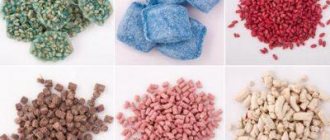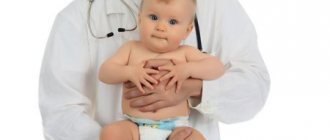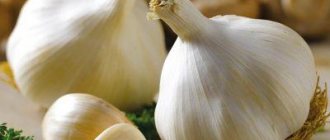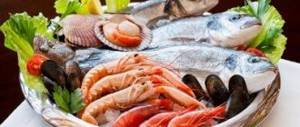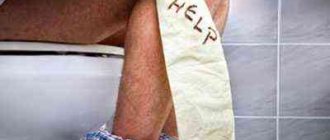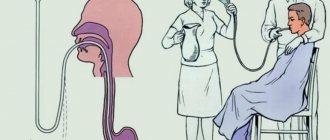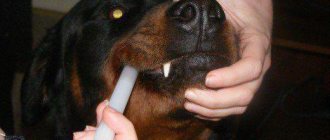Diarrhea and vomiting in a dog can be signs of poisoning, intoxication, pathological processes in internal organs, or an infectious disease. This is a reaction of rejection of the contents of the stomach and intestines in order to get rid of dangerous substances coming from the outside or from the inside (as a result of the activity of parasites).
Excessive vomiting and diarrhea can quickly lead to dehydration, a serious condition for a dog. It is characterized by weakness, lethargy, a noticeable decrease in the elasticity of the skin, depression, changes in the shade of the eyeballs, slowing down, weakening of the pulse, etc.
What is diarrhea in an animal?
A healthy and active dog defecates 2 to 4 times a day, and the animal’s feces are always perfectly formed, strong and moist. The color of normal feces ranges from light to dark shades of brown. Depending on various reasons, the animal’s digestion process may be disrupted, and the feces may become watery (water diarrhea in a dog). The color of the stool also changes; the excrement can be clayey, yellow, green, black, with particles of blood, mucus, and fragments of undigested food. The smell of feces becomes extremely unpleasant (putrid or sour).
When diarrhea occurs, your four-legged friend begins to worry and may require walking up to 10 times a day. Diarrhea is accompanied by weakness, apathy, and refusal of any treat or water. Diarrhea in a puppy, lasting from several hours to a day, does not pose a threat to the pet’s life, but if the diarrhea lasts for more than 2-3 days, the dog’s body becomes severely dehydrated. This condition often leads to death.
You may be interested in this article: Chocolate poisoning
Yellow color of stool
The yellow color of feces is given by the bile pigment - bilirubin. Normally, this substance moves through the gastrointestinal tract along with the bolus of food. Bilirubin is exposed to enzymes and converted to stercobilin, which gives stool a brown color.
With various pathologies, the process of food passing through the gastrointestinal tract is accelerated. Bilirubin does not have time to turn into stercobilin, and the feces become yellowish. Stool staining can also be observed in liver pathologies, accompanied by an increase in the level of bile pigments in the blood.
The following diseases can cause yellow diarrhea in a dog:
- food intoxication;
- plague;
- hepatitis;
- pancreatitis;
- gallbladder disease;
- indigestion.
Sometimes this type of diarrhea occurs when there is an excess of fat in the diet. Eating butter and high-fat cottage cheese is especially undesirable for dogs.
If yellow diarrhea is caused by poor nutrition or poisoning, but the dog feels satisfactory, then a fasting day should be arranged. During the day, your pet can only drink water. It is also necessary to use enterosorbents to remove toxins. After the diarrhea stops, you can give your dog rice water. For 3 days after the diarrhea disappears, a gentle diet is necessary, excluding fatty foods.
If diarrhea continues for more than a day, you should visit a veterinarian. An emergency visit to a doctor is necessary if your pet’s health deteriorates, body temperature drops, and feces smell foul. This is how parvovirus enteritis manifests itself.
Types of diarrhea
When walking your pet, you should always pay attention to the consistency and color of fecal matter, because this will help avoid serious consequences for the animal’s health. Having noticed that your pet is suffering from diarrhea, you should monitor its condition throughout the day, and if the diarrhea has noticeable deviations, your four-legged friend should be immediately shown to a doctor.
Diarrhea can be of the following types:
- Red - occurs when blood particles enter the stool. The causes of bloody feces can be viral diseases, severe infectious processes, and injuries to the intestinal tract.
- White - observed in the absence of bilirubin (a substance formed as a result of the breakdown of red blood cells) in the feces. White liquid stools are a consequence of blockage of the bile ducts.
- Black - black stool indicates bleeding in the stomach or intestines, however, if the animal was given activated charcoal the day before, the stool also takes on a dark color.
- Bright yellow or bile diarrhea in dogs - occurs with impaired liver function, severe viral infections, and helminthic infestations.
- Green - most often this type of diarrhea is preceded by the dog eating spoiled food, and the food in the stomach begins to rot. In addition, green feces are a symptom of gastrointestinal diseases, the result of the introduction of bacteria and viruses into the body, and dysbiosis.
- Mucus in excrement - if a dog has diarrhea with mucus, this indicates diseases of the digestive system, helminthiases, intestinal injuries, leptospirosis, cancerous tumors in the gastrointestinal tract, an atypical form of rabies, intoxication of the body.
- Vomiting with diarrhea - appears due to various poisonings (most often food poisoning). Vomiting may also be accompanied by foam, and this condition indicates that a foreign object has entered the gastrointestinal tract.
Attention! Sometimes foamy diarrhea in a dog takes a chronic form and is a consequence of profound changes in the dog’s digestive organs. Chronic indigestion can occur due to any of the above reasons.
Diagnostics
If the stool takes on an unusual color, this indicates the development of pathology in the body:
- yellow - indicates food poisoning, indigestion, helminthiasis, liver dysfunction. If the animal is lethargic and the body temperature drops, then parvovirus enteritis is suspected;
- red - blood enters the intestines. This may be the result of injury or acute infection;
- black - indicates gastric bleeding, pathology of the duodenum;
- white - appears with hepatitis, blockage of the bile ducts;
- green - active fermentation as a result of processing poor quality food.
Causes of diarrhea in dogs
Severe diarrhea in a dog is a symptom of indigestion, which can be caused by various diseases, including life-threatening ones. The owner of the animal needs to find out what caused the violation and take appropriate measures to help the pet. The most common causes of diarrhea in dogs:
- food from the human table;
- a sudden change in diet, for example replacing natural food with dry food;
- intoxication with toxic chemicals;
- helminthic infestations cause loose stools and vomiting in the dog;
- infectious diseases;
- cancer tumors in the gastrointestinal tract;
- obesity;
- foreign objects swallowed by an animal;
- inflammation of the stomach;
- sharp bones (chicken, beef fragments) eaten by a dog lead to diarrhea with mucus in the dog;
- minimum content of vitamins in food;
- endocrine pathologies such as diabetes mellitus;
- allergic reactions.
Info! Some factors that cause diarrhea are deadly to your pet's health. For example, a disease such as parvovirus enteritis in a puppy causes severe and rapid dehydration of the body, as a result of which the pet dies. The causes and treatment of diarrhea in a dog should only be determined by a specialist.
If diarrhea is due to infection
If the veterinarian has determined that the cause of diarrhea is an infection, then comprehensive treatment for this condition is required. For the most part, in addition to dietary nutrition, special antibacterial agents are prescribed, which direct their action to destroy the infection.
If we consider the most severe infectious disease that can cause diarrhea, it is canine distemper. Thus, when organizing dietary meals, it is necessary to take into account the following basic recommendations:
- Eliminate salt consumption by your pet as much as possible;
- It is worth reducing your dog’s consumption of spices or hot seasonings;
- fatty meat and fish should also be avoided as much as possible;
- meat that is offered to animals must be strictly lean and always well boiled;
- all food should crumble very finely and must be thermally treated before consumption;
- when the animal’s condition begins to improve, boiled eggs can be introduced into food;
- Among dairy products, preference is given only to low-fat cottage cheese or kefir.
Based on all of the above, we can conclude that non-infectious diarrhea in animals is a condition that can be easily eliminated with the help of a proper diet.
Symptoms of diarrhea in a dog
In many cases, frequent diarrhea in a dog is considered a consequence of digestive dysfunction that does not cause significant harm to the animal, but sometimes diarrhea indicates the occurrence of severe pathologies that threaten the life of a faithful friend. Some diseases may not be accompanied by additional symptoms, so it is extremely difficult to see that your pet is sick.
Any pathology that provokes diarrhea has its own characteristic signs, but there are also general symptoms of dysfunction of the digestive organs:
- weakness;
- refusal of any food;
- lethargic state;
- increase in body temperature;
- the dog vomits and has diarrhea of abnormal color and with various impurities;
- constant lying of the pet on its side;
- increased salivation.
Only a veterinarian can determine why diarrhea occurs and how to stop diarrhea in a dog. As a rule, a routine external examination of the dog is not enough, so the doctor prescribes additional studies and tests (endoscopy, scatology, ultrasound, x-ray, general urine and blood tests).
Black stool
There are cases when animals have tarry stools. This is a very dangerous sign. Gastrointestinal bleeding is the most common cause of black diarrhea in dogs. Treatment and first aid should be provided as soon as possible, as this condition can lead to the death of the pet.
When bleeding from the stomach and upper intestines, feces look like a black sticky mass with a specific odor. They consist of blood digested by enzymes. This type of diarrhea is called melena by veterinarians. If the stomach is affected, diarrhea is accompanied by dark-colored vomit.
Black diarrhea appears with the following pathologies of the stomach and duodenum:
- ulcerative processes;
- malignant tumors;
- damage to the upper intestines by worms.
It is impossible to stop bleeding at home. It is urgent to call an ambulance or take the animal to the clinic. At the pre-medical stage, the following measures must be taken:
- Do not feed or water the dog.
- Provide your pet with complete rest.
- Apply a cold compress to the abdominal area.
- Introduce hemostatic drugs intramuscularly or subcutaneously: Zantac or Vikasol.
If there is bleeding from the stomach or intestines, it is strictly forbidden to give enemas.
There are also more harmless reasons for the appearance of black stool. Activated carbon gives this color to feces, which is used as an enterosorbent for diarrhea. If the dog has not taken such medications, then black stool is a warning sign.
Treatment
Treatment of diarrhea in a dog depends entirely on the severity of the disease, but the sooner the owner of the animal takes action and shows the pet to the veterinarian, the faster and easier the dog will tolerate this condition. It is necessary to remember that only mild manifestations of diarrhea can be treated independently, but if the pathology lasts several days, the dog vomits and diarrhea, you cannot do without the help of a specialist.
This is interesting to know: Diarrhea in a Yorkie
The dog has diarrhea, what should the owner do in this case? To help your pet cope with the pathology, it is necessary to limit the pet’s food for several days or completely review its diet. Be sure to ensure that your pet drinks enough liquid. As food, you can use rice (viscous) porridge, which has an enveloping effect on the walls of the stomach and intestines. You can introduce fermented milk products into your diet, which help increase the natural intestinal microflora.
If a dog has vomiting and diarrhea, antispasmodics and enterosorbents (activated carbon) and medicinal plants (sage, nettle, chamomile) will help. How to treat diarrhea in a dog? In the first aid kit for people you can find medications that will also help animals:
- Loperamide. Anti-diarrhea tablets for dogs, but should only be used with the permission of a veterinarian.
- Adsorbents. Help remove poisons and toxins from the body, eliminate diarrhea. Before giving your dog an enterosorbent (coal, polysorb, enterosgel, smecta) for diarrhea, you need to know exactly the weight of the animal.
- Enterofuril. An effective remedy for diarrhea for dogs caused by intestinal infection.
If the owner notices diarrhea in the dog, treatment at home should be very careful. It should be remembered that antimicrobial and anti-inflammatory medications should only be recommended by a veterinarian; an incorrectly chosen dosage of medication for diarrhea in a dog can worsen the animal’s condition.
Useful article: how to flush a dog’s stomach
Proper dog diet
If a dog begins to go to the toilet with a lot of liquid feces, this is not evidence that it is sick with anything. Most often, such situations may arise due to the fact that the pet’s food is not of the required quality, or the pet may eat something during a walk, which is completely undesirable.
Thus, after vomiting and diarrhea appear, you should refrain your animal from consuming food for at least twelve hours.
However, we should not forget that it is very important that the dog consumes a sufficient amount of clean water.
Also, on the recommendation of a veterinarian, you can give your pet anti-diarrhea medications, which are used to stop diarrhea and other manifestations of intestinal disorders as much as possible.
Based on this, it is necessary to highlight the main products that can be given to your pet so that he stops diarrhea and vomiting:
- boiled lean meat;
- low-fat fermented milk products;
- Mashed potatoes.
It is imperative to exclude the following harmful foods from your pet’s diet:
- cold fatty foods;
- fried or smoked;
- raw meat;
- milk.
For the most part, dietary food for dogs is similar to the food that people use for diarrhea. It is imperative to exclude the consumption of dry food, since even the highest quality of them contain a certain percentage of fat, which can have a detrimental effect on the general condition of the animal.
Diet for diarrhea
What do you give dogs for diarrhea from food? If an animal suffers from diarrhea, the first thing the owner should do is to completely put the pet on a starvation diet (at least for a day), only water is allowed. The next day after diarrhea, the dog can drink a decoction of rice cereal and medicinal herbs. After the diarrhea disappears, it is recommended to feed the dog rice porridge cooked in low-fat broth (beef or chicken). Any protein foods should be temporarily excluded.
After a day, the animal can be given a fermented milk product (kefir, cottage cheese or yogurt), the lactobacilli contained in it help normalize the intestinal flora. It is allowed to feed a little lean meat (chicken, rabbit or turkey), as well as a small piece of sea fish without bones.
Advice from the doctor! After stool normalization, the owner must completely change the pet’s feeding diet. It is strictly forbidden to treat your dog with food from the owner's table; food for your four-legged pet must be of high quality and balanced. The best option would be to feed a specially developed medicinal food.
Discoloration of stool
If a dog develops white diarrhea, this most often indicates a lack of bilirubin in the stool. This is due to blockage of the bile ducts by stones. The pathology is accompanied by yellowing of the whites of the eyes and oral mucosa. Obstructive jaundice is a dangerous condition requiring surgical treatment.
Another reason for white diarrhea may be indigestion of lipids. In this case, the feces become shiny and greasy. Such symptoms are observed in liver diseases and pancreatitis. It is impossible to cure such pathologies at home. It is necessary to completely eliminate fatty foods from the dog’s diet and consult a veterinarian.
Preventing diarrhea in dogs
Any pet owner can prevent the risk of diarrhea. The main rule is to carefully monitor what your furry friend eats. All products fed to the dog must be fresh, of high quality and easily digestible by the animal’s body. The portion of food should be small, and anything that your four-legged friend has not eaten should be removed immediately. In addition, your pet needs regular deworming and vaccinations.
To prevent poisoning from spoiled food, you should only walk your pet outside wearing a muzzle. This way, the family pet will not be able to swallow a foreign or spoiled product from the ground.
Diarrhea is not as harmless a condition as it might seem at first glance. Liquid excrement and the color of diarrhea in a dog indicate that there is a disorder in the digestive system that cannot be ignored. Every owner who is faced with the problem of diarrhea in a pet should definitely find out why the dog has diarrhea.
Bloody impurity
The appearance of scarlet blood in feces indicates a serious problem in the body. A red color indicates bleeding from the lower intestine. It is very difficult to independently determine the cause of bloody diarrhea in a dog. Treatment and diagnosis of pathology can only be carried out by a veterinarian.
Diarrhea with bleeding from the intestines can occur with the following pathologies:
- traumatization of the walls of the gastrointestinal tract by swallowed sharp objects;
- plague;
- atypical form of rabies;
- intestinal infections;
- leptospirosis;
- tumors of the lower intestine;
- infection with worms.
Often, owners give their pets human medications without a veterinarian's prescription. This can also cause bloody diarrhea in your dog. Treatment and diagnosis of such conditions is carried out in a veterinary clinic. You should immediately stop giving your dog medications intended for humans. Most often, bleeding is provoked by non-steroidal painkillers (Ibuprofen) and antipyretics based on acetylsalicylic acid.
You should not try to treat bloody diarrhea in your dog on your own. The causes and nature of the pathology can only be determined through a diagnostic examination. It is necessary to take your pet to the veterinarian as soon as possible.
Please be aware that some foods may turn stool reddish or orange. Often, pet owners mistake this color of stool for bloody diarrhea in their dog. The cause of stool turning red may be the consumption of beets or carrots. These vegetables have laxative properties and can cause diarrhea.
Symptoms of the disease
Symptoms directly depend on the severity or neglect of the disease, they manifest themselves in the following:
- the stool becomes watery with mucus or blood interspersed, there is an unpleasant odor,
- color changes to yellow or green, also brown and black,
- the dog whines during defecation,
- frequent bowel movements,
- the presence of mucus indicates inflammation of the gastrointestinal tract,
- behavior changes: the dog is restless or lethargic, whines in pain,
- severe nausea, the dog begins to vomit, most often white or yellow-green foam,
- high temperature:
- Loud, rumbling sounds are heard from the stomach:
- drowsiness,
- avoids contact with the owner,
- refusal of water and food or extreme thirst and intense appetite.
It is imperative to pay attention to additional symptoms. An elevated temperature is a sign of infection. Weakness indicates poisoning. With a sudden change in diet - refusal to eat and loose stools. Refraining from drinking water - possible infection.
Children get sick twice as often as adult dogs. Inexperienced owners get confused and panic if the puppy starts vomiting. If, along with vomiting, your dog begins to have diarrhea mixed with blood, has a low or high temperature, or refuses to eat, you should urgently take the animal to the veterinarian. If the baby vomits once, the temperature is normal, the puppy is active - you just need to watch him and treat him yourself.
Prevention of gastrointestinal disorders
The main measure that an owner can take to protect against diarrhea is choosing the right diet. Of course, it is best to feed your pet meat with the addition of offal, grains, vegetables and dairy products, as well as vitamins and minerals. However, this must be a balanced diet, observing a certain proportion.
For those who prefer commercially prepared feeds, it is important to choose the right products. As a rule, economy options are oversaturated with artificial colors, flavors, various additives and chemical compounds, and they can also contain traces of antibiotics, which is fraught with consequences. From such a diet, bloody stools with mucus and severe diarrhea may well appear. Veterinarians recommend feeding their pets only high-quality super premium food or the holistic line.
If you still encounter diarrhea due to poor nutrition, then you should not immediately give your dog medicine, give tablets, human-tested chloramphenicol in an elephant dosage and stuff it with decoctions so that it stops running to the toilet. For these purposes, there is a special veterinary food that perfectly eliminates all symptoms and normalizes the functioning of the gastrointestinal tract.
Basic preventive measures:
- Limit your animal's access to household chemicals.
- Keep a close eye on your pet while walking. If your dog likes to pick up everything from the ground, use a muzzle as a means of preventing possible problems.
- Treat your four-legged friend against parasites and helminths in a timely manner.
- Get your vaccinations according to the recommended schedule.
- Do not walk with your puppy until he is 4 months old and has completed the full course of vaccinations.
To ensure that your dog is always healthy, cheerful and vigorous, take care of the main things: proper nutrition, hygiene and exercise.
Necessary actions for diarrhea and vomiting
An experienced specialist, as well as a person who is not the first to encounter a similar phenomenon in dogs, can cure an animal at home. If diarrhea is not complicated by other factors, then sorbent agents will help remove toxins from the body. It is recommended to use veterinary drugs in the dosages specified in the instructions for use. It is not advisable to use human medicines because they have not been tested on animals.
The owner must ensure that the pet adheres to a certain diet. In the first couple of hours after vomiting, it is not recommended to give the animal anything to drink. Subsequently, you can give 20 teaspoons of clean water every 20-30 minutes. As soon as your pet stops drinking, you should stop trying. Excess fluid in the body can cause repeated vomiting.
If the dog continues to diarrhea, it is worth giving it compounds that will maintain the level of fluid in the body, which comes out along with feces and vomit. If a pet has a helminth infestation, it is necessary to treat it with deworming medications, strictly following the dosage specified in the instructions for use.
Important! Diarrhea is only a symptom of another disease, and therefore, before you begin to treat the animal, you need to find out the reason that caused the diarrhea.
Due to age, diarrhea is more common in puppies than in adults. This is due to the immaturity of the baby’s stomach. Many dog owners who encounter their pet’s abnormal stool for the first time do not know what to do. First of all, you need to pay attention to the frequency and color of diarrhea (yellow, black, green or bloody are not normal).
If diarrhea is not complicated by a change in the color of the stool, as well as the frequency of bowel movements, then you just need to change the puppy’s diet. In the first few hours after the onset of diarrhea, you should not feed him, give him only water or rice broth. On your doctor's recommendation, you can feed your dog activated charcoal.
Feeding a dog activated carbon from a syringe
